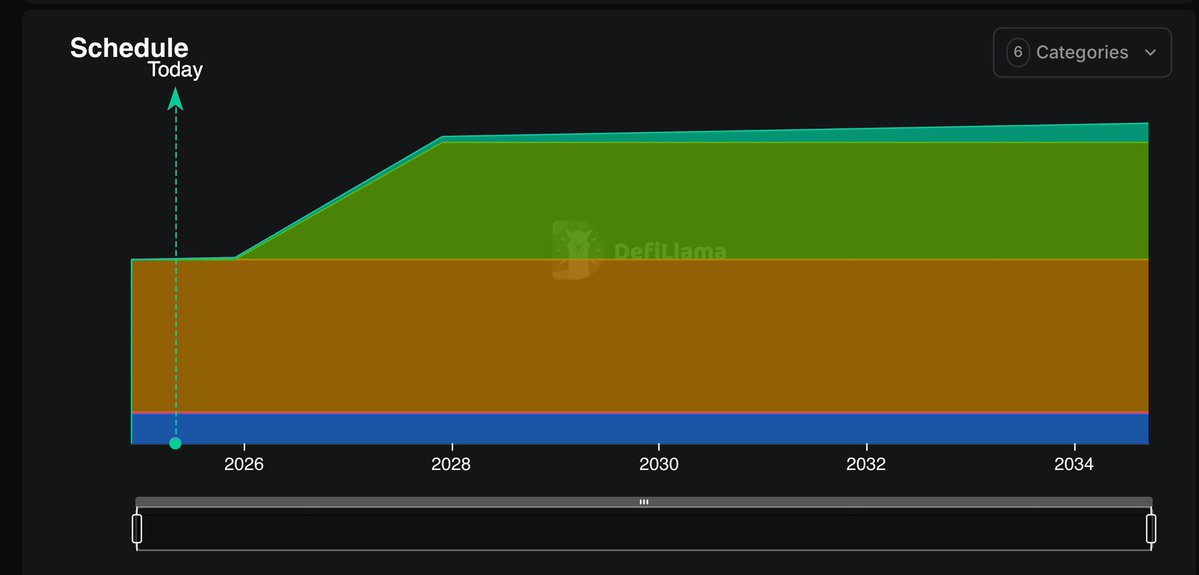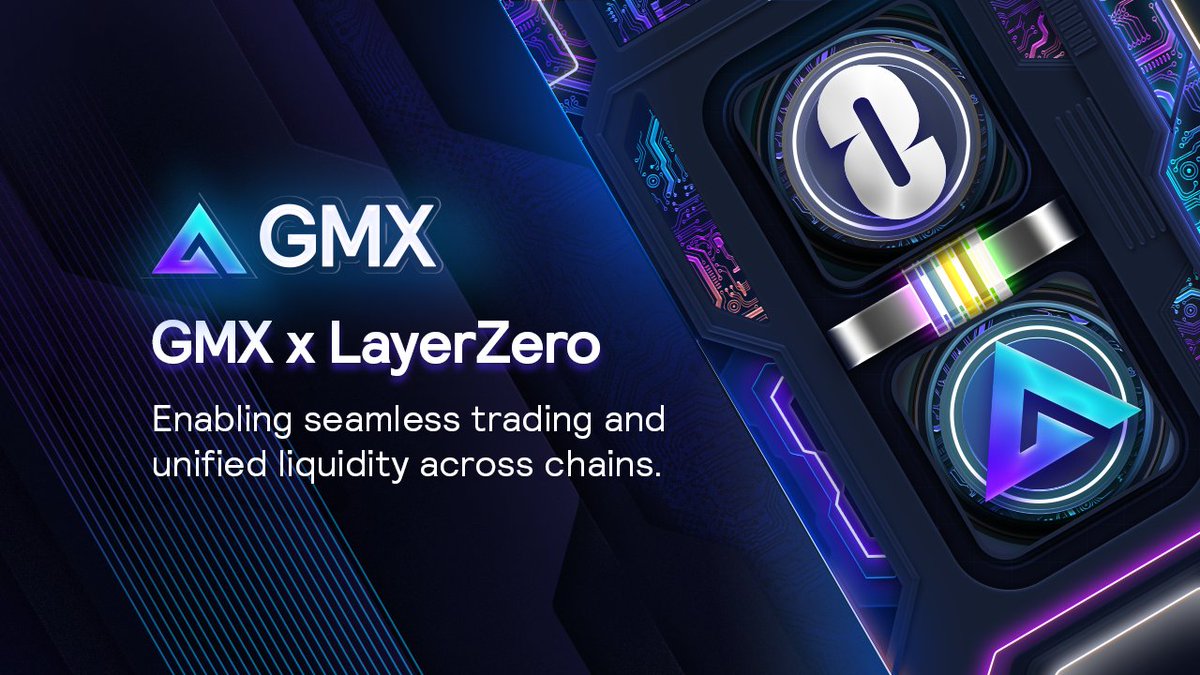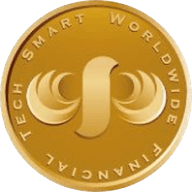
GMX
Cena GMX
$13,2800
+$0,090000
(+0,68%)
Zmiana ceny od 00:00 czasu UTC do teraz

Jak się dzisiaj czujesz w związku z GMX?
Podziel się swoimi odczuciami tutaj, dając kciuk w górę, jeśli czujesz wzrost w związku z monetą, lub kciuk w dół, jeśli czujesz spadek.
Głosuj, aby wyświetlić wyniki
Zastrzeżenie
Treści społecznościowe na tej stronie („Treści”), w tym między innymi tweety i statystyki dostarczane przez LunarCrush, pochodzą od stron trzecich i są dostarczane „tak jak są” wyłącznie w celach informacyjnych. OKX nie gwarantuje jakości ani dokładności Treści, a Treści nie reprezentują poglądów OKX. Nie mają one na celu (i) doradztwa inwestycyjnego lub rekomendacji; (ii) oferty lub zachęty do kupna, sprzedaży lub posiadania aktywów cyfrowych; lub (iii) doradztwa finansowego, księgowego, prawnego lub podatkowego. Aktywa cyfrowe, w tym stablecoiny i NFT, wiążą się z wysokim stopniem ryzyka i mogą podlegać znacznym wahaniom. Cena i wyniki aktywów cyfrowych nie są gwarantowane i mogą ulec zmianie bez powiadomienia.
OKX nie udziela rekomendacji dotyczących inwestycji ani aktywów. Musisz dokładnie rozważyć, czy handel lub posiadanie aktywów cyfrowych jest dla Ciebie odpowiednie w świetle Twojej sytuacji finansowej. W przypadku pytań dotyczących konkretnej sytuacji skonsultuj się ze swoim doradcą prawnym, podatkowym lub specjalistą ds. inwestycji. Aby uzyskać więcej informacji, zapoznaj się z warunkami użytkowania i ostrzeżeniem o ryzyku. Korzystając z witryny internetowej strony trzeciej („TWP”), akceptujesz, że wszelkie korzystanie z TPW będzie podlegać warunkom TPW i będzie regulowane przez te warunki. O ile nie zostało to wyraźnie określone na piśmie, OKX i jego podmioty stowarzyszone („OKX”) nie są w żaden sposób powiązane z właścicielem lub operatorem TPW. Zgadzasz się, że OKX nie ponosi odpowiedzialności za jakiekolwiek straty, szkody i inne konsekwencje wynikające z korzystania z TPW. Pamiętaj, że korzystanie z TPW może spowodować utratę lub zmniejszenie Twoich aktywów. Produkt może nie być dostępny we wszystkich jurysdykcjach.
OKX nie udziela rekomendacji dotyczących inwestycji ani aktywów. Musisz dokładnie rozważyć, czy handel lub posiadanie aktywów cyfrowych jest dla Ciebie odpowiednie w świetle Twojej sytuacji finansowej. W przypadku pytań dotyczących konkretnej sytuacji skonsultuj się ze swoim doradcą prawnym, podatkowym lub specjalistą ds. inwestycji. Aby uzyskać więcej informacji, zapoznaj się z warunkami użytkowania i ostrzeżeniem o ryzyku. Korzystając z witryny internetowej strony trzeciej („TWP”), akceptujesz, że wszelkie korzystanie z TPW będzie podlegać warunkom TPW i będzie regulowane przez te warunki. O ile nie zostało to wyraźnie określone na piśmie, OKX i jego podmioty stowarzyszone („OKX”) nie są w żaden sposób powiązane z właścicielem lub operatorem TPW. Zgadzasz się, że OKX nie ponosi odpowiedzialności za jakiekolwiek straty, szkody i inne konsekwencje wynikające z korzystania z TPW. Pamiętaj, że korzystanie z TPW może spowodować utratę lub zmniejszenie Twoich aktywów. Produkt może nie być dostępny we wszystkich jurysdykcjach.
Informacje o rynku GMX
Kapitalizacja rynkowa
Kapitalizacja rynkowa jest obliczana poprzez pomnożenie podaży w obiegu monety przez ostatnią cenę.
Kapitalizacja rynkowa = Podaż w obiegu × Ostatnia cena
Kapitalizacja rynkowa = Podaż w obiegu × Ostatnia cena
Podaż w obiegu
Całkowita ilość monet publicznie dostępnych na rynku.
Ranking kapitalizacji rynkowej
Ranking monety pod względem wartości kapitalizacji rynkowej.
Najwyższa w historii
Najwyższa cena, jaką moneta osiągnęła w swojej historii transakcji.
Najniższa w historii
Najniższa cena, jaką moneta osiągnęła w swojej historii transakcji.
Kapitalizacja rynkowa
$134,04M
Podaż w obiegu
10 116 558 GMX
76,35% z
13 250 000 GMX
Ranking kapitalizacji rynkowej
--
Audyty

Ostatni audyt: 3 cze 2021
Najwyższa cena w ciągu 24 godz.
$13,4000
Najniższa cena w ciągu 24 godz.
$12,5600
Najwyższa w historii
$91,4100
-85,48% (-$78,1300)
Ostatnia aktualizacja: 18 kwi 2023
Najniższa w historii
$9,5600
+38,91% (+$3,7200)
Ostatnia aktualizacja: 7 kwi 2025
GMX Feed
Następująca zawartość pochodzi z .



GMX 🫐
8 ważnych ogłoszeń GMX z kwietnia '25, które mogłeś przegapić: 🧵
1️⃣ GMX wygenerował ~100 milionów dolarów opłat i zarobił w tym roku ~32 miliony dolarów przychodu, @TokenTerminal najważniejsze.
2️⃣ GMX DAO wybiera @LayerZero_Core jako preferowanego dostawcę infrastruktury przesyłania wiadomości dla GMX Multichain.
3️⃣ GLV: [USDC] jest dostępny na @GMX_SOL, umożliwiając użytkownikom zapewnienie płynności i zarabianie tylko za pomocą stablecoinów
4️⃣ GMX miał największy wkład w PKB @Arbitrum One w ciągu ostatnich 365 dni.
5️⃣ Kamień milowy w wolumenie obrotu: 1,01 miliarda dolarów w zaledwie 24 godziny
6️⃣ GMX realizuje główne notowanie Perp DEX tokena $DOLO
7️⃣ Kwietniowa aktualizacja rozwoju GMX
8️⃣ GMX chce uruchomić natywną dla Bitcoina wersję swojego DEX w sieci @BotanixLabs.
👇
Pokaż oryginał21,18 tys.
84

Duo Nine ⚡ YCC
Słowo ostrzeżenia na temat Hyperliquid. Dodaj to do zakładek.
Widzę pewne podobieństwa do GMX.
Najlepszy DEX na rynku, token radzi sobie świetnie, wszyscy FOMOzą. To dlatego, że wciąż jest w okresie miesiąca miodowego.
Sprawdź harmonogram nabywania uprawnień. Po 2025 roku czeka nas ciężka walka z 250 milionami nowych tokenów.
Rozumiem szum wokół HYPE i jego rosnącego ekosystemu. To, co zbudował Hyperliquid, jest imponujące.
Jeśli jednak wzrost ich ekosystemu nie będzie w stanie wchłonąć inflacji tokena, a konkurenci zaczną zmniejszać jego zalety, w ciągu roku lub dwóch, może on podążać za akcją cenową GMX.
GMX mocno pompował po starcie, skorygował się o 80%, a następnie osiągnął nowe ATH. Potem była to nieprzerwana bessa z nowymi minimami każdego roku.
HYPE mocno wzrósł po uruchomieniu, skorygowany o 73% i może osiągnąć nowe ATH, zanim te 250 milionów nabytych tokenów trafi do ksiąg zleceń. Najlepiej realizować twarde zyski w tym momencie, a w każdym razie przed nadejściem 2026 roku.
Tokeny DEX mają zazwyczaj krótką lub średnią żywotność, zanim osiągną gorsze wyniki. Przykłady obejmują UNI, GMX, SUSHI, 1inch i tak dalej.
Hyperliquid dobrze poradził sobie z wyjściem poza swój DEX, ponieważ byłoby to niewystarczające do utrzymania tokenów HYPE o wartości 1 bilia.
Zablokowanie jak największej liczby tokenów HYPE w ich rosnącym ekosystemie pomoże, ale ich harmonogram nabywania uprawnień zbiega się z możliwą bessą w przyszłości.
Hyperliquid poradził sobie z wieloma rzeczami dobrze, ale jego przewaga konkurencyjna zostanie zniwelowana w ciągu 1-2 lat, gdy pojawią się nowi innowatorzy i konkurenci.
Giełdy i handel to najbardziej konkurencyjny rynek kryptowalut. Mam nadzieję, że HYPE będzie nadal dobrze sobie radził, ale krajobraz za 1-2 lata będzie trudny, szczególnie dla lidera rynku handlu dexami.
Dodatkowo, Hyperliquid został ostatnio zaatakowany przez CEX-y ze względu na swoje rosnące wpływy. Dobrze jest pamiętać o takich przeciwnościach, zanim w przyszłości zainwestujesz w HYPE za 50 USD.
Ludzie małpowali również GMX za 90 USD. Zobacz, jak to poszło. Od tego czasu spadł o 90%, podczas gdy BTC miażdży się do sześciocyfrowych wartości.
Weź dobre zyski w drodze w górę i zabezpiecz je za pomocą Bitcoina. To jedyna strategia, która czyni Cię zwycięzcą w dłuższej perspektywie.
Kliknij @DU09BTC obserwowania, aby uzyskać więcej informacji rynkowych w przyszłości i udostępnij tę wiadomość, jeśli podobała Ci się jej lektura.
Pokaż oryginał
59,83 tys.
57

Ponownie udostępniono Botanix Labs 🕷

GMX 🫐
GMX staje się bezterminową giełdą dla publicznych blockchainów bez zezwoleń.
Wdrożenia Arbitrum, Avalanche i Solana są już dostępne. GMX Multichain wkrótce umożliwi bezproblemowy handel z popularnych blockchainów EVM, takich jak @Berachain, @Base, @BNBCHAIN i inne.
Technologia @LayerZero_Core pozwoli inwestorom na dostęp do setek milionów płynności w istniejących wdrożeniach GMX cross-chain z dowolnego obsługiwanego blockchaina. Bezproblemowo i bezpiecznie.
Hybrydowe wdrożenie na Spiderchain @BotanixLabs firmy - wiodącej warstwie 2 Bitcoina, która oferuje niskie opłaty, szybkie czasy bloków i pełną kompatybilność z EVM - jest realizowane równolegle, po niedawnym głosowaniu DAO za tą propozycją.
Pokaż oryginał
62,06 tys.
232

Ponownie udostępniono Josh

Josh
Czy handel OG Defi powróci?
Oto moje przemyślenia na temat $AERO vs $HYPE
Pracuję w przestrzeni handlu onchain od 2021 roku, początku $ARB $GMX $GNS $DYDX itp. - z których wszystkie są złe.
Think Hyperliquid konkuruje bezpośrednio z $BNB i Binance.
Nie do fud projektów, ale wykresy na produktach handlowych OG Defi nie wyglądają dobrze.
Pokaż oryginał15,92 tys.
1
Wydajność ceny GMX w USD
Obecna cena GMX wynosi $13,2800. Od 00:00 czasu UTC GMX ma zwiększony przez +0,68%. Obecnie ma podaż w obiegu 10 116 558 GMX i maksymalną podaż w wysokości 13 250 000 GMX, co daje jej w pełni rozwodnioną kapitalizację rynkową w wysokości $134,04M. Obecnie moneta GMX zajmuje 0 pozycję w rankingach kapitalizacji rynkowej. Cena GMX/USD jest aktualizowana w czasie rzeczywistym.
Dzisiaj
+$0,090000
+0,68%
7 dni
-$1,3600
-9,29%
30 dni
+$2,2400
+20,28%
3 miesiące
-$3,2500
-19,67%
Popularne GMX konwersje
Ostatnia aktualizacja: 07.05.2025, 18:35
| 1 GMX na USD | 13,2500 $ |
| 1 GMX na EUR | 11,6661 € |
| 1 GMX na PHP | 734,33 ₱ |
| 1 GMX na IDR | 219 008,3 Rp |
| 1 GMX na GBP | 9,9366 £ |
| 1 GMX na CAD | 18,2874 $ |
| 1 GMX na AED | 48,6671 AED |
| 1 GMX na VND | 343 977,2 ₫ |
Informacje GMX (GMX)
Podana ocena jest zagregowaną oceną zebraną przez OKX z podanych źródeł i służy wyłącznie celom informacyjnym. OKX nie gwarantuje jakości ani dokładności ratingów. Nie ma on na celu zapewnienia (i) porady inwestycyjnej lub rekomendacji; (ii) oferty lub zachęty do kupna, sprzedaży lub posiadania aktywów cyfrowych; lub (iii) porady finansowej, księgowej, prawnej lub podatkowej. Aktywa cyfrowe, w tym stablecoiny i NFT, wiążą się z wysokim stopniem ryzyka, mogą podlegać znacznym wahaniom, a nawet stać się bezwartościowe. Cena i wydajność aktywów cyfrowych nie są gwarantowane i mogą ulec zmianie bez powiadomienia. Twoje aktywa cyfrowe nie są objęte ubezpieczeniem od potencjalnych strat. Historyczne zwroty nie wskazują na przyszłe zwroty. OKX nie gwarantuje żadnego zwrotu, spłaty kapitału ani odsetek. OKX nie udziela rekomendacji dotyczących inwestycji lub aktywów. Dokładnie rozważ, czy handel lub posiadanie aktywów cyfrowych jest dla Ciebie odpowiednie w świetle Twojej sytuacji finansowej. W przypadku pytań dotyczących konkretnej sytuacji należy skonsultować się ze specjalistą ds. prawnych/podatkowych/inwestycyjnych.
Pokaż więcej
- Oficjalna strona internetowa
- Github
- Eksplorator bloków
Informacje o stronach internetowych stron trzecich
Informacje o stronach internetowych stron trzecich
Korzystając z witryny internetowej strony trzeciej („TPW”), użytkownik akceptuje fakt, że wszelkie korzystanie z TPW podlega warunkom TPW i jest regulowane przez te warunki. O ile nie zostało to wyraźnie określone na piśmie, OKX i jej podmioty stowarzyszone („OKX”) nie jest w żaden sposób powiązana z właścicielem lub operatorem TPW. Użytkownik zgadza się, że OKX nie ponosi odpowiedzialności za jakiekolwiek straty, szkody i inne konsekwencje wynikające z korzystania z TPW. Należy pamiętać, że korzystanie z TPW może spowodować utratę lub zmniejszenie aktywów.
Najczęściej zadawane pytania GMX
Ile jest wart dzisiaj 1 GMX?
Obecnie jeden GMX jest wart $13,2800. Aby uzyskać odpowiedzi i wgląd w akcję cenową GMX, jesteś we właściwym miejscu. Przeglądaj najnowsze wykresy GMX i handluj odpowiedzialnie z OKX.
Co to jest kryptowaluta?
Kryptowaluty, takie jak GMX, to aktywa cyfrowe, które działają w publicznym rejestrze zwanym blockchainem. Dowiedz się więcej o monetach i tokenach oferowanych na OKX oraz ich różnych atrybutach, w tym o cenach na żywo i wykresach w czasie rzeczywistym.
Kiedy wynaleziono kryptowalutę?
Dzięki kryzysowi finansowemu z 2008 r. zainteresowanie zdecentralizowanymi finansami wzrosło. Bitcoin oferował nowatorskie rozwiązanie, zapewniając bezpieczne aktywa cyfrowe w zdecentralizowanej sieci. Od tego czasu powstało również wiele innych tokenów, takich jak GMX.
Czy cena GMX pójdzie dzisiaj w górę?
Sprawdź nasze Strona z prognozą cen GMX, aby prognozować przyszłe ceny i określić swoje cele cenowe.
Ujawnienie ESG
Przepisy ESG (środowiskowe, społeczne i ładu korporacyjnego) dla aktywów kryptowalutowych mają na celu uwzględnienie ich wpływu na środowisko (np. energochłonne kopanie), promowanie przejrzystości i zapewnienie etycznych praktyk zarządzania w celu dostosowania przemysłu kryptowalutowego do szerszego zrównoważonego rozwoju oraz celów społecznych. Przepisy te zachęcają do przestrzegania standardów, które ograniczają czynniki ryzyka i zwiększają zaufanie do aktywów cyfrowych.
Szczegóły aktywów
Nazwa
OKcoin Europe LTD
Identyfikator odpowiedniego podmiotu prawnego
54930069NLWEIGLHXU42
Nazwa aktywa krypto
GMX
Mechanizm konsensusu
GMX is present on the following networks: arbitrum, avalanche.
Arbitrum is a Layer 2 solution on top of Ethereum that uses Optimistic Rollups to enhance scalability and reduce transaction costs. It assumes that transactions are valid by default and only verifies them if there's a challenge (optimistic): Core Components: • Sequencer: Orders transactions and creates batches for processing. • Bridge: Facilitates asset transfers between Arbitrum and Ethereum. • Fraud Proofs: Protect against invalid transactions through an interactive verification process. Verification Process: 1. Transaction Submission: Users submit transactions to the Arbitrum Sequencer, which orders and batches them. 2. State Commitment: These batches are submitted to Ethereum with a state commitment. 3. Challenge Period: Validators have a specific period to challenge the state if they suspect fraud. 4. Dispute Resolution: If a challenge occurs, the dispute is resolved through an iterative process to identify the fraudulent transaction. The final operation is executed on Ethereum to determine the correct state. 5. Rollback and Penalties: If fraud is proven, the state is rolled back, and the dishonest party is penalized. Security and Efficiency: The combination of the Sequencer, bridge, and interactive fraud proofs ensures that the system remains secure and efficient. By minimizing on-chain data and leveraging off-chain computations, Arbitrum can provide high throughput and low fees.
The Avalanche blockchain network employs a unique Proof-of-Stake consensus mechanism called Avalanche Consensus, which involves three interconnected protocols: Snowball, Snowflake, and Avalanche. Avalanche Consensus Process 1. Snowball Protocol: o Random Sampling: Each validator randomly samples a small, constant-sized subset of other validators. Repeated Polling: Validators repeatedly poll the sampled validators to determine the preferred transaction. Confidence Counters: Validators maintain confidence counters for each transaction, incrementing them each time a sampled validator supports their preferred transaction. Decision Threshold: Once the confidence counter exceeds a pre-defined threshold, the transaction is considered accepted. 2. Snowflake Protocol: Binary Decision: Enhances the Snowball protocol by incorporating a binary decision process. Validators decide between two conflicting transactions. Binary Confidence: Confidence counters are used to track the preferred binary decision. Finality: When a binary decision reaches a certain confidence level, it becomes final. 3. Avalanche Protocol: DAG Structure: Uses a Directed Acyclic Graph (DAG) structure to organize transactions, allowing for parallel processing and higher throughput. Transaction Ordering: Transactions are added to the DAG based on their dependencies, ensuring a consistent order. Consensus on DAG: While most Proof-of-Stake Protocols use a Byzantine Fault Tolerant (BFT) consensus, Avalanche uses the Avalanche Consensus, Validators reach consensus on the structure and contents of the DAG through repeated Snowball and Snowflake.
Mechanizmy motywacyjne i obowiązujące opłaty
GMX is present on the following networks: arbitrum, avalanche.
Arbitrum One, a Layer 2 scaling solution for Ethereum, employs several incentive mechanisms to ensure the security and integrity of transactions on its network. The key mechanisms include: 1. Validators and Sequencers: o Sequencers are responsible for ordering transactions and creating batches that are processed off-chain. They play a critical role in maintaining the efficiency and throughput of the network. o Validators monitor the sequencers' actions and ensure that transactions are processed correctly. Validators verify the state transitions and ensure that no invalid transactions are included in the batches. 2. Fraud Proofs: o Assumption of Validity: Transactions processed off-chain are assumed to be valid. This allows for quick transaction finality and high throughput. o Challenge Period: There is a predefined period during which anyone can challenge the validity of a transaction by submitting a fraud proof. This mechanism acts as a deterrent against malicious behavior. o Dispute Resolution: If a challenge is raised, an interactive verification process is initiated to pinpoint the exact step where fraud occurred. If the challenge is valid, the fraudulent transaction is reverted, and the dishonest actor is penalized. 3. Economic Incentives: o Rewards for Honest Behavior: Participants in the network, such as validators and sequencers, are incentivized through rewards for performing their duties honestly and efficiently. These rewards come from transaction fees and potentially other protocol incentives. o Penalties for Malicious Behavior: Participants who engage in dishonest behavior or submit invalid transactions are penalized. This can include slashing of staked tokens or other forms of economic penalties, which serve to discourage malicious actions. Fees on the Arbitrum One Blockchain 1. Transaction Fees: o Layer 2 Fees: Users pay fees for transactions processed on the Layer 2 network. These fees are typically lower than Ethereum mainnet fees due to the reduced computational load on the main chain. o Arbitrum Transaction Fee: A fee is charged for each transaction processed by the sequencer. This fee covers the cost of processing the transaction and ensuring its inclusion in a batch. 2. L1 Data Fees: o Posting Batches to Ethereum: Periodically, the state updates from the Layer 2 transactions are posted to the Ethereum mainnet as calldata. This involves a fee, known as the L1 data fee, which accounts for the gas required to publish these state updates on Ethereum. o Cost Sharing: Because transactions are batched, the fixed costs of posting state updates to Ethereum are spread across multiple transactions, making it more cost-effective for users.
Avalanche uses a consensus mechanism known as Avalanche Consensus, which relies on a combination of validators, staking, and a novel approach to consensus to ensure the network's security and integrity. Validators: Staking: Validators on the Avalanche network are required to stake AVAX tokens. The amount staked influences their probability of being selected to propose or validate new blocks. Rewards: Validators earn rewards for their participation in the consensus process. These rewards are proportional to the amount of AVAX staked and their uptime and performance in validating transactions. Delegation: Validators can also accept delegations from other token holders. Delegators share in the rewards based on the amount they delegate, which incentivizes smaller holders to participate indirectly in securing the network. 2. Economic Incentives: Block Rewards: Validators receive block rewards for proposing and validating blocks. These rewards are distributed from the network’s inflationary issuance of AVAX tokens. Transaction Fees: Validators also earn a portion of the transaction fees paid by users. This includes fees for simple transactions, smart contract interactions, and the creation of new assets on the network. 3. Penalties: Slashing: Unlike some other PoS systems, Avalanche does not employ slashing (i.e., the confiscation of staked tokens) as a penalty for misbehavior. Instead, the network relies on the financial disincentive of lost future rewards for validators who are not consistently online or act maliciously. o Uptime Requirements: Validators must maintain a high level of uptime and correctly validate transactions to continue earning rewards. Poor performance or malicious actions result in missed rewards, providing a strong economic incentive to act honestly. Fees on the Avalanche Blockchain 1. Transaction Fees: Dynamic Fees: Transaction fees on Avalanche are dynamic, varying based on network demand and the complexity of the transactions. This ensures that fees remain fair and proportional to the network's usage. Fee Burning: A portion of the transaction fees is burned, permanently removing them from circulation. This deflationary mechanism helps to balance the inflation from block rewards and incentivizes token holders by potentially increasing the value of AVAX over time. 2. Smart Contract Fees: Execution Costs: Fees for deploying and interacting with smart contracts are determined by the computational resources required. These fees ensure that the network remains efficient and that resources are used responsibly. 3. Asset Creation Fees: New Asset Creation: There are fees associated with creating new assets (tokens) on the Avalanche network. These fees help to prevent spam and ensure that only serious projects use the network's resources.
Początek okresu, którego dotyczy ujawnienie
2024-04-20
Koniec okresu, którego dotyczy ujawnienie
2025-04-20
Raport o energii
Zużycie energii
2660.23259 (kWh/a)
Źródła zużycia energii i metodologie
The energy consumption of this asset is aggregated across multiple components:
To determine the energy consumption of a token, the energy consumption of the network(s) arbitrum, avalanche is calculated first. Based on the crypto asset's gas consumption per network, the share of the total consumption of the respective network that is assigned to this asset is defined. When calculating the energy consumption, we used - if available - the Functionally Fungible Group Digital Token Identifier (FFG DTI) to determine all implementations of the asset of question in scope and we update the mappings regulary, based on data of the Digital Token Identifier Foundation.













Społeczności